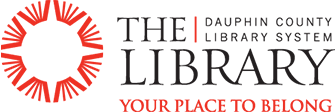St. Stephen’s Episcopal School students had a human heart in their hands. Not an actual human heart, but a 3-D version so realistic that they could look inside the ventricles.
The experience was made possible through The Library and an exciting educational technology called zSpace.
“It was amazing,” said teacher Amy Zimmers. “One of the kids said, ‘It’s only us and heart surgeons who’ve been this close to a beating heart before.’ I thought it was neat that they realized that.”
The Library now offers local schools the use of zSpace, acquired through Educational Improvement Tax Credits funding (EITC) and installed on regular laptops. The award-winning zSpace software projects a 3-D image that students can manipulate with a pointer. The item spins, opens, and moves, all at the student’s command.
Through zSpace, abstract concepts transform into visuals that inspire student engagement and critical thinking. Students can do everything from operating an automotive power train to building a carbon dioxide molecule. They can immerse in research-backed, curriculum-aligned experiences in the sciences, technology, studio arts, digital literacy, and even making a pizza from elementary through high school.

“It’s 3-D without a headset,” said Library Programming and Outreach Administrator Tynan Edwards. “It’s an image you can manipulate and look at from different angles.”
In history classes, local students have “visited” the battlefields of Gettysburg and deconstructed cannons. For social studies, they can call up the designs of Leonardo da Vinci and study the dimensions of his famous Vitruvian Man.
As the last school year neared its end, Zimmers’ students were pleading to do dissections. When a Library staffer told Zimmers about The Library’s zSpace computers, the two saw an opportunity to prepare the seventh- and eighth-graders for the experience.
“In real-life dissection, the five hearts of the earthworm aren’t highlighted for you,” Zimmers said.
“Sometimes, they’re just in brown muck. It’s harder to see things in real life. With the opportunity to do it on the zSpace computers, they got to see the shape, size, and approximate location of all the different organs we were looking for,’’ she said. “When we finally got to the lab, it was much easier to build our knowledge before we did the real thing.”
During dissection in the school lab, Zimmers could light the spark of recognition by reminding students of what they had seen on the zSpace computers for comparison with the real thing.
Edwards watched as Zimmers’ students were engrossed in their virtual dissections.
“The kids did a great job,” he said. “They were engaged. They asked questions.”
And as he notes, schools can use zSpace for anatomy lessons without actual dissections.
“You get all the action of a dissection without the gore, expense, or smell,” he said. “It is a lot of fun.”
Zimmers agrees that virtual dissection is “a lot safer” than the traditional laboratory experience.
“Your kids aren’t coming in contact with the preservatives,” she said. “They’re not wielding sharp objects in the classroom.”

She could envision zSpace as an engagement tool for younger students, as well, “because it is so visual. It adds a lot of depth to a lesson plan. Instead of being this abstract thing you’re trying to explain to third graders, grade there it is in 3-D.”
Library staff can take the zSpace-equipped laptops to classrooms, or teachers can bring their students to The Library. Zimmers walked her students up Front Street in Harrisburg from St. Stephen’s Episcopal School to nearby McCormick Riverfront Library. Some homeschool families are also bringing their kids to The Library for 3-D supplementation of lessons.
The zSpace acquisition complements The Library’s growing stock of hands-on equipment for exploring STREAM (that’s science, technology, reading, arts, and mathematics). The focused effort is meant to help schools regain learning lost during the pandemic.
“We want to make sure that kids can get the learning they need,” said Edwards. “We can offer a lot of really cool things inside and outside the classroom to make sure students succeed now that they’re back in school full-time. I’m hoping that we can get back to the normalcy of the school classroom and give them some things to make them excited to be back in the classroom and The Library.”
The Library is going full STREAM ahead on helping its school partners introduce children to the wonders of literacy and learning.
“We’re dedicated to lifelong learning, and schools are some of the best places to start,” Edwards said. “We want to make that access available for them and the students. That makes everything easier for us and our communities to get kids engaged in learning and willing to be lifelong learners.”



